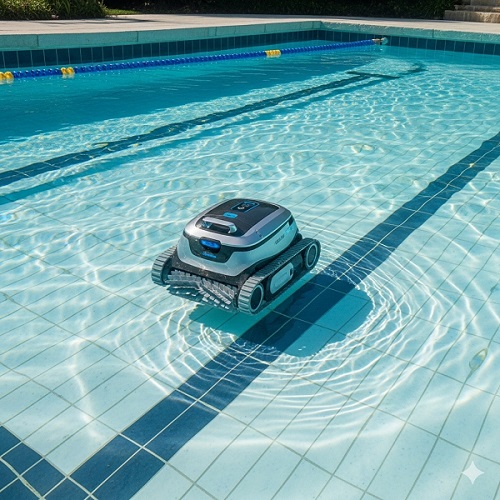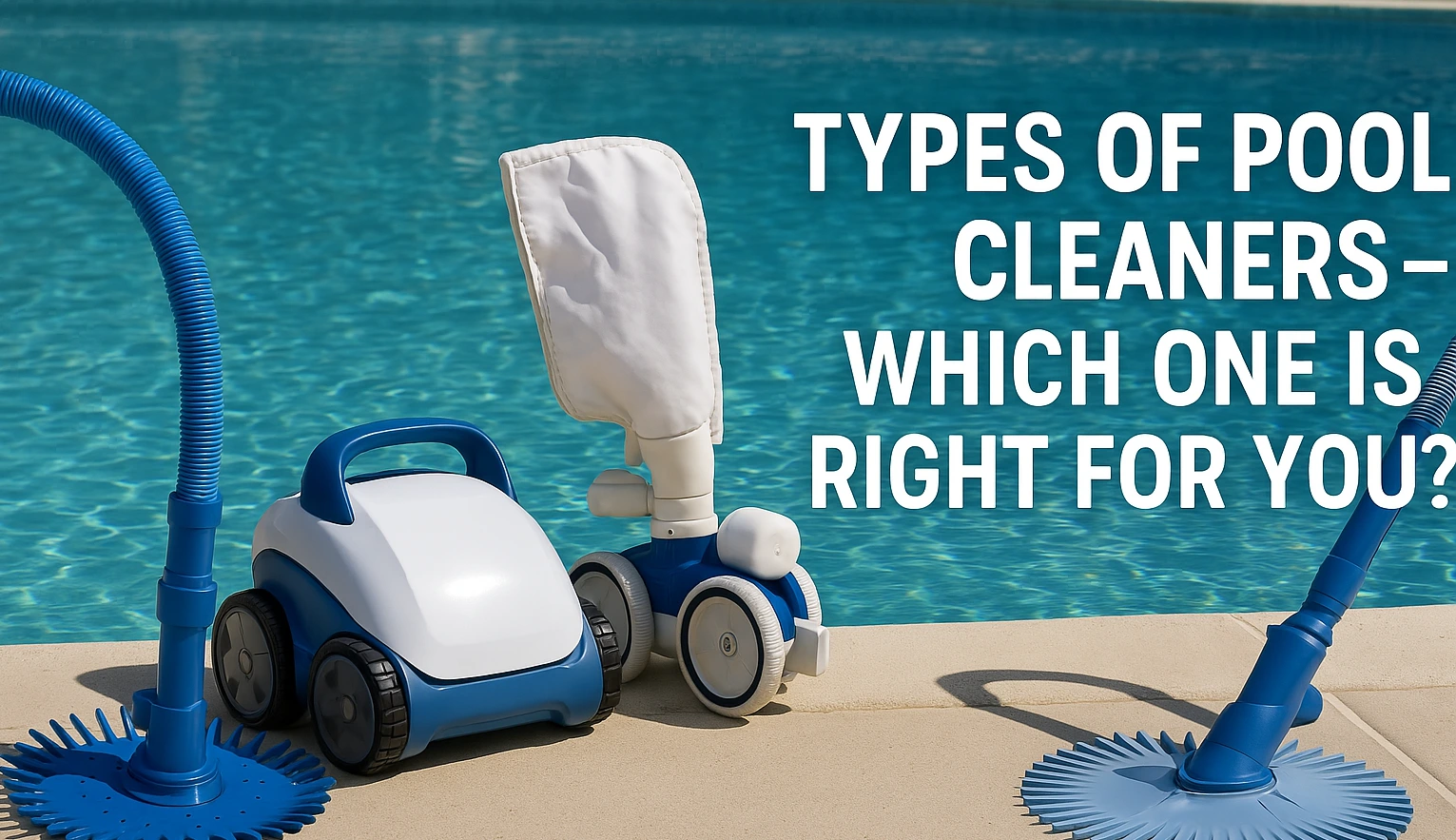
Automatic Pool Vacuum : Advantages & Tips for Buying
If you own a pool, you know how much work goes into keeping it clean. Traditional methods like using a

Owning a swimming pool can bring joy, relaxation, and a great way to cool off during the warmer months. However, maintaining a sparkling clean pool requires effort and the right tools. One of the most essential tools in your pool care arsenal is a reliable pool vacuum cleaner. With several types available on the market, choosing the right one can be overwhelming. In this article, we’ll explore the various types of pool cleaners to help you determine which one is ideal for your swimming pool.
Suction-side pool cleaners connect to your pool’s skimmer or a dedicated suction line. They use the suction created by your pool’s filtration system to move around the pool, collecting debris and dirt. These cleaners are an affordable and efficient option for regular pool maintenance.
a) Budget-friendly
b) Easy to install and operate
c) Effective at removing fine dirt and debris
a) Relies heavily on the pool’s filtration system
b) May require frequent cleaning of the pool filter
c) Less effective for larger debris
– Small to medium-sized pools
– Pools with light debris
Pressure-side cleaners attach to your pool’s return jet, using water pressure to move and collect debris. They often come with their own filter bag, reducing strain on your pool’s filtration system.
a) Reduces wear on the pool’s filtration system
b) Effective for larger debris
c) Suitable for larger pools
a) Requires a booster pump for optimal performance
b) Higher initial cost compared to suction-side cleaners
c) Regular maintenance of the filter bag
– Larger pools
– Pools surrounded by trees or exposed to heavy debris
Robotic pool vacuum cleaners are standalone devices that operate independently of your pool’s filtration system. They have built-in motors, advanced sensors, and smart navigation systems to clean your pool efficiently.
a) Energy-efficient
b) Thorough cleaning of floors, walls, and waterlines
c) Easy to set up and use
d) Reduces load on your pool’s filtration system
a) Higher initial investment
b) Requires electricity
c) Regular maintenance of the internal filter
– All pool sizes
– Pool owners looking for hands-off cleaning
Manual cleaners include vacuum heads, brushes, and telescopic poles. These require manual operation, meaning you’ll need to physically clean the pool using your own effort.
a) Most affordable option
b) Provides precise cleaning control
c) No need for electricity or additional pumps
a) Labor-intensive
b) Time-consuming
c) Not ideal for large pools
a) Small pools or spas
b) Spot cleaning
c) Pool owners on a tight budget
In-floor cleaning systems are built directly into the pool structure. They use a network of nozzles that spray water to push debris toward the main drain for removal.
a) Fully automated cleaning system
b) Minimal visible equipment
c) Enhances pool circulation
a) Expensive to install
b) Best suited for new pool constructions
c) Complex maintenance
a) Large custom pools
b) High-end residential pools
When deciding on the best pool cleaner for your swimming pool, consider the following factors:
1. Pool Size and Shape: Larger pools may benefit from robotic or pressure-side cleaners, while smaller pools may only require a suction-side or manual cleaner.
2. Debris Type: If your pool is surrounded by trees or exposed to frequent debris, a pressure-side or robotic cleaner may be ideal.
3. Budget: Consider both the upfront cost and long-term maintenance expenses.
4. Ease of Use: Robotic cleaners are user-friendly, while manual cleaners require more effort.
5. Filtration System Capacity: Ensure your pool’s filter and pump can handle the additional load of a suction or pressure-side cleaner.
To ensure your pool cleaner operates efficiently, follow these maintenance tips:
1. Regular Cleaning: Empty the cleaner’s debris bag or filter regularly.
2. Inspect Hoses and Cables: Check for clogs, leaks, or damage.
3. Store Properly: Store robotic cleaners in a cool, dry place when not in use.
4. Follow Manufacturer Instructions: Always refer to the user manual for proper care and maintenance.
Choosing the right pool cleaner can make maintaining your swimming pool a breeze. Whether you prefer the hands-off convenience of a robotic cleaner or the affordability of a suction-side cleaner, there’s a suitable option for every pool owner. Assess your pool’s specific needs, budget, and cleaning preferences to make an informed decision. With the right cleaner, you can enjoy a sparkling clean pool all season long.

If you own a pool, you know how much work goes into keeping it clean. Traditional methods like using a

Keeping a pool clean is not easy for many people. It takes time to scrub the floor, clear the walls,
